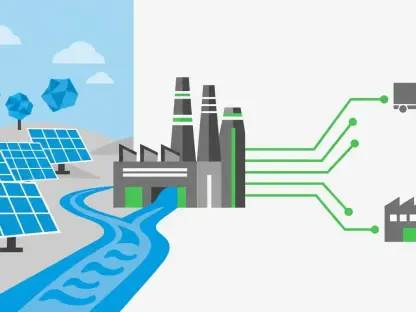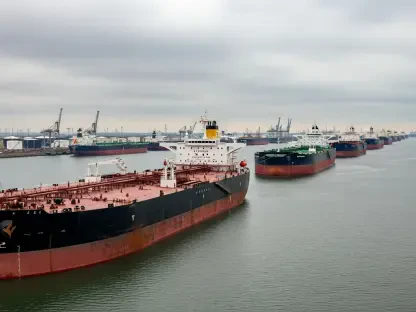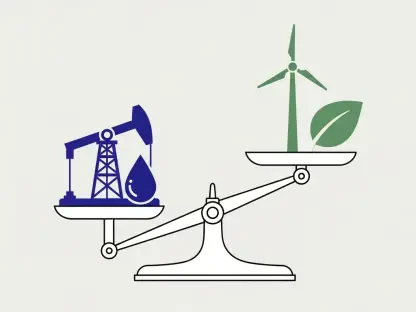With extensive experience in energy management, renewable energy, and electricity delivery, Christopher Hailstone provides valuable insights into the methanol market, discussing grid reliability and security. In this interview, Christopher delves into the factors impacting methanol prices, the influence of rising demand for olefins, and the significant shifts in trading activity. He also touches upon the developments in the shipping industry and their implications for alternative fuels.
What factors are contributing to the narrowing price spread between European and Chinese methanol?
European methanol production costs are relatively higher, influenced heavily by spikes in natural gas prices. This cost increase has led to decreased demand for European methanol, thereby narrowing the price spread with Chinese methanol. Oversupply in the market has also played a role.
How has the increase in natural gas prices impacted European methanol production?
The rise in natural gas prices has significantly raised production costs for European methanol. This has resulted in reduced profitability for producers, affecting demand and pricing strategies, ultimately contributing to the narrowing of the price spread with Chinese methanol.
What are the current price ranges for European methanol futures contracts for 2024 and 2025?
European methanol futures contracts have been trading in a range of €270 to €440 for 2024 and €330 to €440 for the current year up to February 2025. These price ranges reflect the market’s response to production cost pressures and demand shifts.
What are the current price ranges for Asian methanol futures contracts for the prior 12-month period to February 2025?
In Asia, the futures settlement price for the prompt contract month has traded between $280 to $325 per metric ton over the previous 12-month period leading up to February 2025. This range indicates stable yet responsive pricing to supply-demand dynamics.
How has the price spread between European and Chinese methanol changed since August 2024?
Since August 2024, the price spread between European and Chinese methanol has narrowed to around $35 per metric ton, reflecting decreased demand for higher-cost European methanol and market adjustments to oversupply conditions.
How is the rising demand for ethylene and propylene influencing the methanol market in Asia?
The increasing demand for ethylene and propylene, vital for the production of plastics and synthetic fibers, has driven the expansion of methanol-to-olefin (MTO) processing plants in Asia. This has bolstered methanol demand and supported higher trading volumes in the region.
Can you explain the role of methanol-to-olefin (MTO) processing plants in the Asian methanol market?
MTO processing plants play a crucial role by converting methanol derived from coal, natural gas, or biomass into olefins, such as ethylene and propylene. The proliferation of these plants across Asia has significantly increased demand for methanol and enhanced trading activities.
How has trading activity in China’s methanol futures market changed in 2025 compared to 2024?
Trading activity in China’s methanol futures market has seen substantial growth in 2025, with average daily volumes in January more than quadrupling compared to the same period in 2024. This surge reflects heightened market engagement and interest.
What were the global traded volumes in methanol futures for January 2025 compared to January 2024?
Global traded volumes in methanol futures doubled in January 2025 compared to January 2024, indicating increased market participation and the strategic importance of methanol futures in commodity trading.
What record was set in January 2025 in the methanol futures market?
In January 2025, a record was achieved with open interest reaching 1,800 contracts across the methanol complex. This milestone reflects growing confidence and investment in methanol futures.
What actions have been pledged by the International Maritime Organisation (IMO) to reduce greenhouse gas emissions in the shipping industry?
The IMO has pledged significant reductions in greenhouse gas emissions, promoting the use of various alternative fuels and the adoption of novel energy efficiency measures in the shipping industry. This commitment aims to lower overall emissions and facilitate a shift towards greener maritime practices.
How are the European Emissions Trading Scheme (ETS) and FuelEU Maritime regulations affecting the use of traditional bunker fuels and alternative fuels in vessels?
The ETS and FuelEU Maritime regulations have created a more level playing field by imposing hefty non-compliance costs on traditional high-emission fuels. This motivates vessel owners to adopt alternative fuels such as biofuels, LNG, methanol, and ammonia, to avoid these costs.
What role do methanol futures play in the context of the new regulations on fuel emissions?
Methanol futures serve as a key benchmark for the market, providing a reference point for carbon-related differentials or green premiums applied to trades between conventional methanol and lower-carbon fuel alternatives. This helps to manage costs and risks associated with the new fuel regulations.
How might blending methanol with green methanol address availability issues of more sustainable methanol?
Blending methanol with green methanol can help alleviate shortages by increasing supply flexibility. This approach not only enhances sustainability but also may boost demand for hedging conventional methanol through futures contracts.
Why could the shortage of green methanol lead to higher demand for hedging conventional methanol?
A shortage of green methanol could drive more firms to hedge conventional methanol to manage price risks amidst supply constraints. Futures contracts become vital tools in stabilizing costs and ensuring consistent availability.
What notable trend did Methanex observe in 2023 regarding dual-fuel methanol ships?
In 2023, Methanex observed that orders for dual-fuel methanol ships outpaced those for LNG-powered vessels, marking a significant shift in the maritime fuel market and growing interest in methanol as a sustainable option.
How many methanol-powered ships are projected to be operational by 2030?
By 2030, approximately 350 methanol-powered ships are expected to be operational, reflecting the industry’s shift towards more sustainable fuel solutions and increasing adoption of methanol.
What are bio-methanol and e-methanol, and how might they qualify as green fuels?
Bio-methanol and e-methanol are emerging fuels produced from biomass and renewable electricity, respectively. They are poised to qualify as green fuels under applicable laws due to their lower carbon footprints and sustainable production processes.
How are alternative fuels like methanol and ammonia currently used in comparison to LNG?
Alternative fuels like methanol and ammonia are in the early stages of adoption compared to LNG, which has a more established market presence. However, interest in these fuels is growing as they offer potential environmental benefits.
What were the bunker sales of methanol in Singapore in 2023 and 2024?
Bunker sales of methanol in Singapore were around 300 tons in 2023, increasing significantly to 1,600 tons by 2024. This growth indicates rising acceptance and utilization of methanol as a maritime fuel.
What recent developments have occurred with bio-methanol in Europe?
In Europe, bio-methanol is emerging as a viable fuel option, with 700 tons delivered at the port of Rotterdam in 2023. Such developments highlight the growing integration of sustainable fuels in the European maritime industry.
Why is risk management a key component for the methanol market?
Risk management is essential due to new centers of demand and ongoing commodity price volatility. Utilizing the futures market helps firms manage price risk effectively, ensuring stability amidst market fluctuations.
How might ongoing commodity price volatility influence firms’ use of the futures market for managing price risk?
Continuous volatility may push more firms towards the futures market to hedge against unpredictable price swings. This approach provides a safeguard, allowing businesses to maintain stable operations despite market uncertainties.
What is your forecast for the methanol market?









